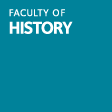One of the most exciting and influential areas of research in eighteenth-century history over the last fifteen years has been the study of crime and the criminal law. It is the purpose of this essay to map the subject for the interested nonspecialist: to ask why historians have chosen to study it, to explain how they have come to approach it in particular ways, to describe something of what they have found, to evaluate those findings, and to suggest fruitful directions for further research. Like all maps, the one presented here is selective. The essay begins with a general analysis of the ways in which the field has developed and changed in its short life. It then proceeds to consider in more detail four areas of study: criminality, the criminal trial, punishment, and criminal legislation. This selection makes no pretense of providing an exhaustive coverage. A number of important areas have been omitted: for example, public order and policing. However, the areas covered illustrate the range of approaches, problems, and possibilities that lie within the field. The essay concludes with a discussion of the broader implications of the subject.



